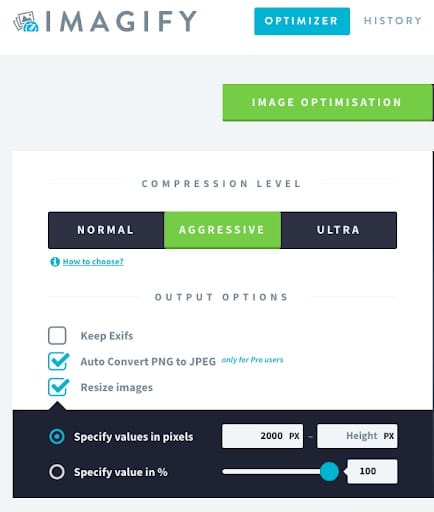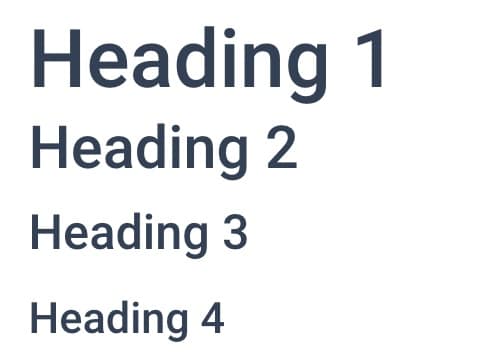Search engine optimization is about more than just building links to your website and hoping that Google will rank you highly in the search…
Search engine optimization is about more than just building links to your website and hoping that Google will rank you highly in the search engines. There are many elements that you need to have in place on your website too. This is commonly known as ‘on-page SEO’. On-page SEO deals with creating high-quality content and structuring your website and individual pages for Google search. On the other hand, off-page SEO refers to tactics that increase backlinks, branded searches, and social media shares, etc.
Let’s dive into some on-page SEO statistics.
Content marketing and on-page SEO go hand in hand, but creating relevant content is only the first piece of the puzzle. After you create a piece of content, you want to optimize each post based on on-page SEO principles. Taking the time to get these small things right will make your content more visible.
Here are some on-page tips that you can use to boost organic traffic and search rankings. We have divided our tips into two categories. The first category is the elements that are visible to users and contribute to a positive user experience. The second category is the elements that aren’t visible to users but are visible to search engine crawlers.
Google (and other search engines) are getting better and better at serving us search results that match our search intent. The tech giant has 10,000+ search engine evaluator contractors/ Google Raters that are tasked with assigning quality ratings for webpages and relevance ratings for search results. On top of that, Google has some of the best brains in tech optimizing their algorithm to please our average human brains. Here are the SEO elements that marketers can optimize to provide users with a better user experience.
Valuable Content
If you’re reading a blog post about on-page SEO that doesn’t speak to the importance of high-quality page content, head back to Google. Keyword stuffing might get someone to click to your site, but it won’t make them stay. The only way a website visitor will stay on your website and engage with your content is if it provides them with value.
Images

Images can be an SEO opportunity or an SEO drag. The first step is choosing images that make your content more valuable. We recommend adding 1-3 images to your blog content. After choosing relevant photos, you need to compress the images to reduce the weight of your website.
According to data from HTTP Archive, the average weight of a webpage in 2020 was 2080 KB for desktop and 1885 KB for mobile. We aim to at least beat this average for our clients. Our team uses Imagify.io to resize and compress images before uploading them to WordPress.
Make sure you use internal linking to direct users through to more useful content on your website. Internal links help users to read and engage with more content that they might be interested in. They also lead search engine crawlers to more pages on your website, which can help them to be indexed in the search results.
Google and other search engines give more weight to websites that display well on mobile devices. Your website should be designed from a mobile-first perspective. According to Hitwise, mobile searches account for 58% of all Google searches.
Having a low load time is critical to SEO success. Google lists website loading time as a ranking factor. It’s a widely recognized standard that your website should load in under 2 seconds. You can test your website speed using a tool such as GTMetrix, PageSpeed Insights, or Lighthouse.
According to Google, 53% of websites are left if a mobile web page takes longer than 3 seconds to load. If your website takes longer than 3 seconds to load, you should make reducing load time a top priority.
Last but not least we have E-A-T. E-A-T is part of Google’s Search Quality Evaluator Guidelines that Google raters use to evaluate web pages. E-A-T stands for expertise, authoritativeness, and trustworthiness.
E-A-T isn’t an official ranking factor, but it is part of an extensive project that Google uses to inform its work. And it never hurts your business to be associated with these attributes. We recommend reviewing the guidelines and working to increase your website’s E-A-T.
Here are a few quick tips for improving your website’s E-A-T:
Marketers know that it’s important to write for humans when creating a website, but you also need to speak to Google’s search engine crawlers. Sending these bots the proper signals can be done by focusing on the following elements.
Don’t stuff your web pages with every keyword you can think of. Instead, use keywords related to your target keyword. We recommend using a tool like Frase to optimize your content for search engine ranking. Our team is required to reach a minimum Frase optimization score of at least 70% before publishing.
The title tag controls the page title in the browser and also the title that is shown in the search results. It’s an important element, as you have the ability to encourage a click-through from someone looking through the search results. Your primary keyword should be used at the start of the title tag and you have up to 60 characters to use here.

Heading Tags should be used correctly throughout your website. The page or post title should use the H1 tag and be the only item that uses that on the page. This helps the search engines to know that this is the most important heading.
We recommend using 3 distinct levels of headings when writing blog content (H1, H2, H3). Every H2 in your blog post doesn’t have to have an H2, but it’s beneficial to have at least one H3 on the web page. These distinct levels provide additional context and structure for web visitors (human & robots).
The meta description is another important element of on-page SEO. We like to think of meta descriptions as social media captions. They are 160 characters and should be used to provide a descriptive introduction to your page and catch the eye of Google users as they scan through search results. This is one of a few tools marketers have to increase the click-through rate of a web page in SERPs.

Every image on your website should have a carefully crafted alt text. Search engine crawlers can’t see the images on your website, so the alt text you use will help them “view” the image. Alt-text is also important for accessibility, blind users using a screen reader will hear a description when they reach the image. Image alt text should be descriptive and between 100–140 characters. It’s important to keep alt text within this character range because screen readers limit the amount of alt text that they will read.
Most content management systems make it easy to add alt text to an image. The most difficult part about alt text is striking a balance between using it for promotional purposes and its intended purpose. When written wel,l alt text can drive organic traffic from Google Images.
Please don’t upload image files to your site with names that are a jumble of letters and numbers or that are irrelevant. IMG1001.JPG isn’t a good file name for your personal, business, or Google’s use. It’s easy to ignore this seemingly insignificant detail, but Google crawlers use filenames to “view” images, so it’s in your best interest to upload images with filenames that describe the image.
When your pages are at the top of the rankings for high traffic search queries, it can be like striking gold. Unfortunately for small companies, the big guys know this all too well. Don’t be discouraged, but be realistic, and know that SEO takes a lot of time and effort. According to a Hubspot survey, 75% of marketers feel their SEO tactics are ‘extremely’ or ‘very effective’ at helping them achieve their marketing goals.
To generate valuable traffic, you will have to churn out quality content that is optimized for SEO. If you don’t know where to start or don’t have the time to implement an SEO strategy, feel free to reach out to us for help!
Copyright © 2017-2025 · Carbon Digital · All Rights Reserved.